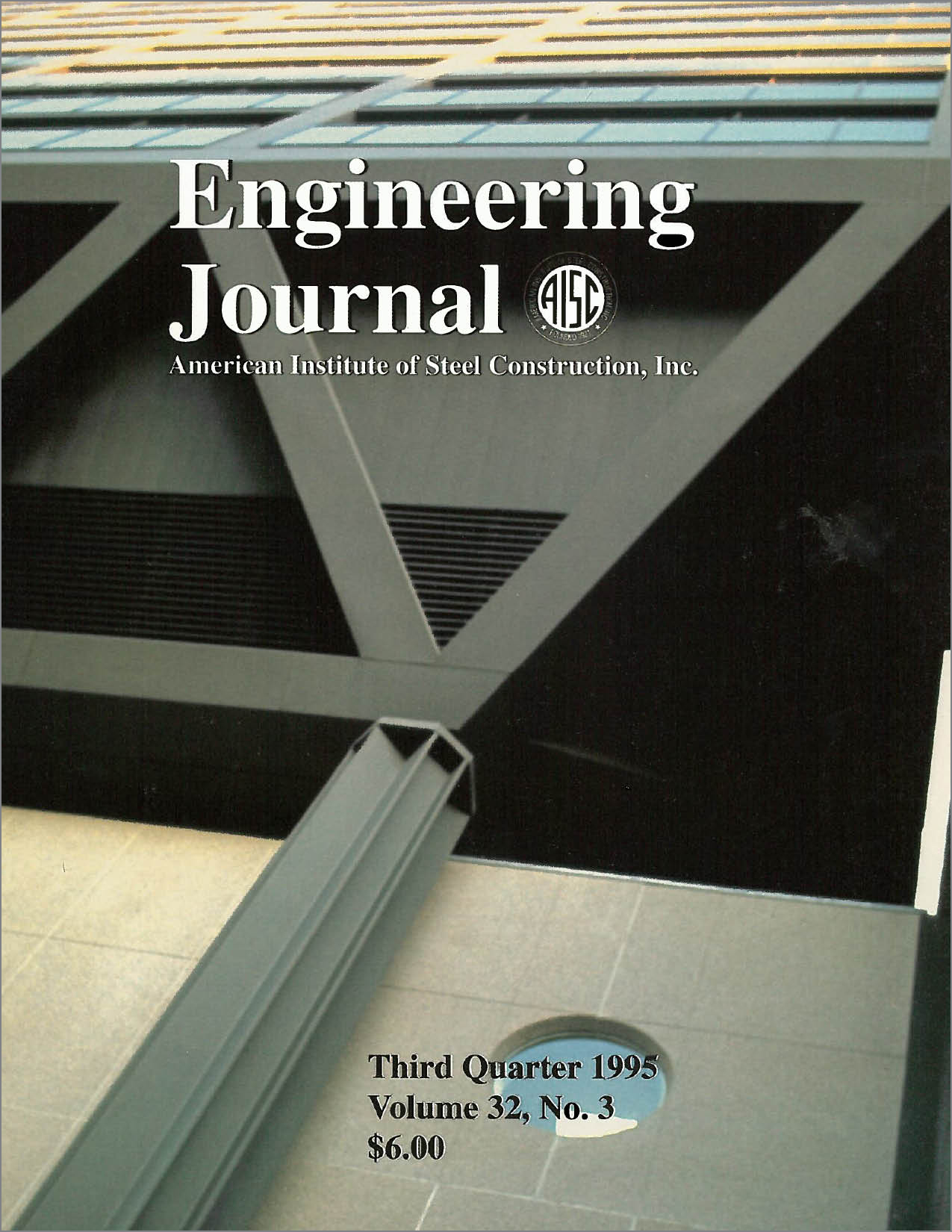Effective Lengths of Uniform and Stepped Crane Columns
DOI:
https://doi.org/10.62913/engj.v32i3.646Abstract
Crane columns are used extensively in warehouses and mill buildings to support overhead cranes. In addition to carrying the dead and live loads of the moving cranes, crane columns are required to support the roof structure of the buildings. The cross-section of a crane column can be uniform or stepped. In the former, a bracket bolted or welded to the face of the column is used to support the runway girder as shown in Figure la. In the latter, the runway girder rests directly on the enlarged segment of the column as shown in Figure lb. In earlier years, it was common practice to erect the crane column independent of the frame column. The two were then connected by batten plates or laces to act as a composite unit as shown in Figure 1c. In any case, the base of the column may be pinned or fixed. If the upper shaft of the column is rigidly connected to the roof of the building, resistance to inplane translation is provided by rigid frame action and the base of the column can be designed as pinned or fixed. However, if the upper shaft of the column is not rigidly connected to the roof as for the case when prefabricated roof trusses are used, the base of the crane column must be designed as rigid so that resistance to sway can be provided by cantilever action of the column.

